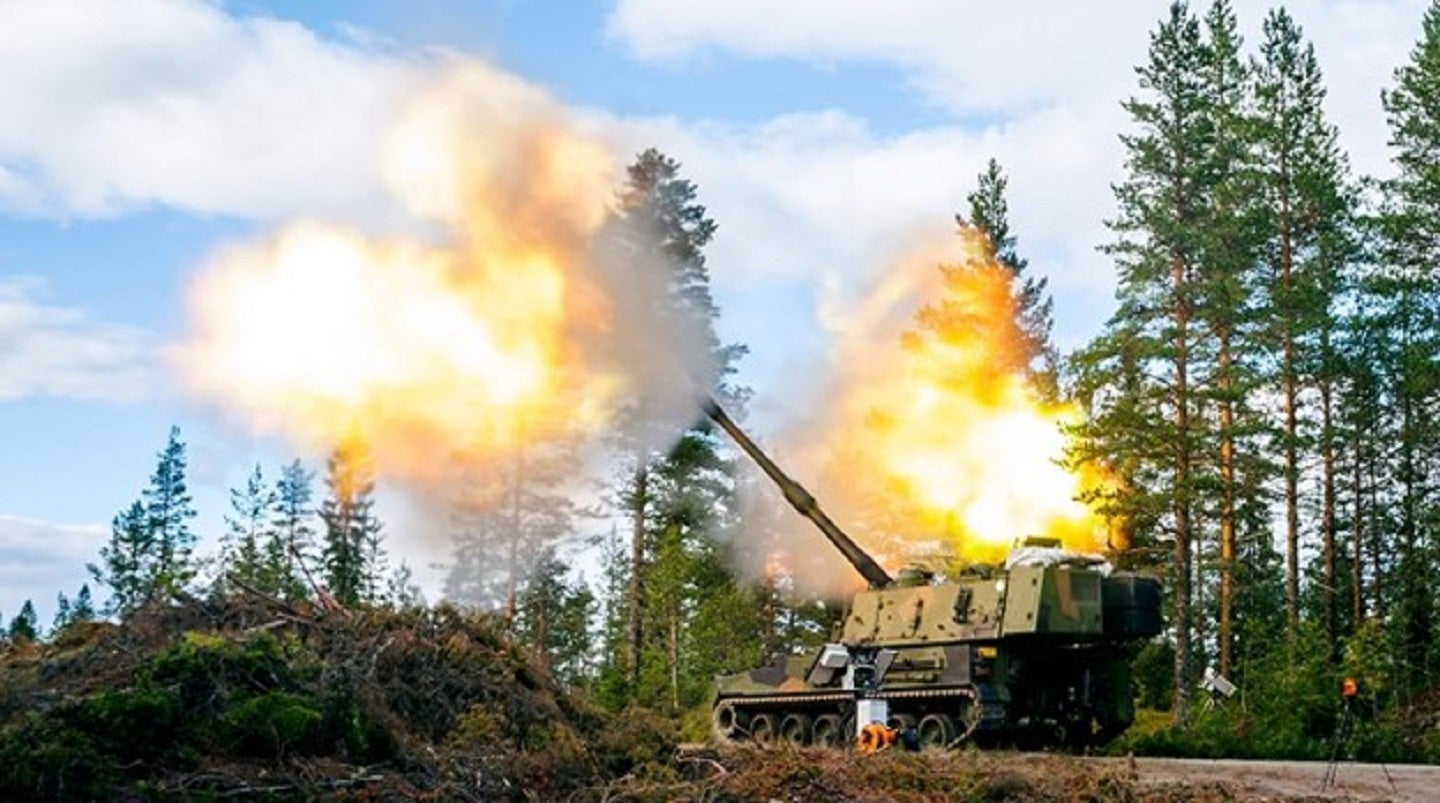
Norway, Finland and South Korea have signed an agreement that simplifies the procedures enabling the two Nordic nations to transfer Korean-made K9 self-propelled howitzer systems to each other, according to an 8 December 2023 press release issued by the Norwegian Government.
“The direct results of this agreement are that artillery vehicles will be operational in a shorter span of time,” the government asserted.
Hanwha Vision is the original equipment manufacturer since the system’s debut for the South Korean Army in 1989. At that time, the company was formerly known as Samsung Techwin and remains a subsidiary of the South Korean defence prime Hanwha Group.
Designated the ‘K9 Thunder’, the artillery system is a highly mobile, 155mm/ 52 calibre self-propelled howitzer that can exert a high rate of fire at long ranges.
The gun can fire a standard M107 high-explosive (HE) projectile at a maximum range of 18 kilometres (km). Maximum range firing the HE rocket-assisted projectile with uni-charge of five zones, is 30km. It can also fire a K307 projectile with a modular-charge of six zones for a maximum range of over 40km.
GlobalData intelligence tells us that Norway operates 24 units while Finland employs seven.
In Norway, these long-range artillery units serve to protect critical national infrastructure, operated by the country’s Home Guard, a light infantry force that forms a nexus between the civil and military spheres.
Similarly, Finland envisions the platform to act as its linchpin artillery, with a life cycle service span reaching the 2050s. Deliveries began in 2018, the first equipped unit of the Finnish Army stood up in 2020, and continued procurement is expected through to 2024. In late 2021, the Finnish Ministry of Defence exercised an option to add more units to the initially planned procurement of 48, bringing the total number up to 58.
Enhancing Nordic military collaboration
Besides the procurement of the same, or at least similar, platforms and equipment due to their shared northern climate, Nordic militaries also tend to operate very closely to one another.
In March this year, Denmark, Finland, Norway and Sweden all signed the Nordic Air Commander’s Intent, pledging to “operate seamlessly together as one force.” This agreement establishes common air education, training and exercises.
Before the signing of the trilateral K9 artillery agreement, procedures for cross-border transfer of Korean artillery equipment were bureaucratic, comprehensive, and time-consuming. A signed application had to be posted to South Korea before any reserved parts could be moved between Norway and Finland.
Now the two nations can simply send a report, after the spare parts have been delivered. The agreement allows the two nations to freely transfer spare parts between each other, even though this involves military material, where restrictions are typically imposed by the originating nation.
“Now that Finland is a member of Nato, our collaboration is more important than ever, and this arrangement will further enhance our defence capabilities,” stated the Norwegian Defence Minister, Bjørn Arild Gram.





